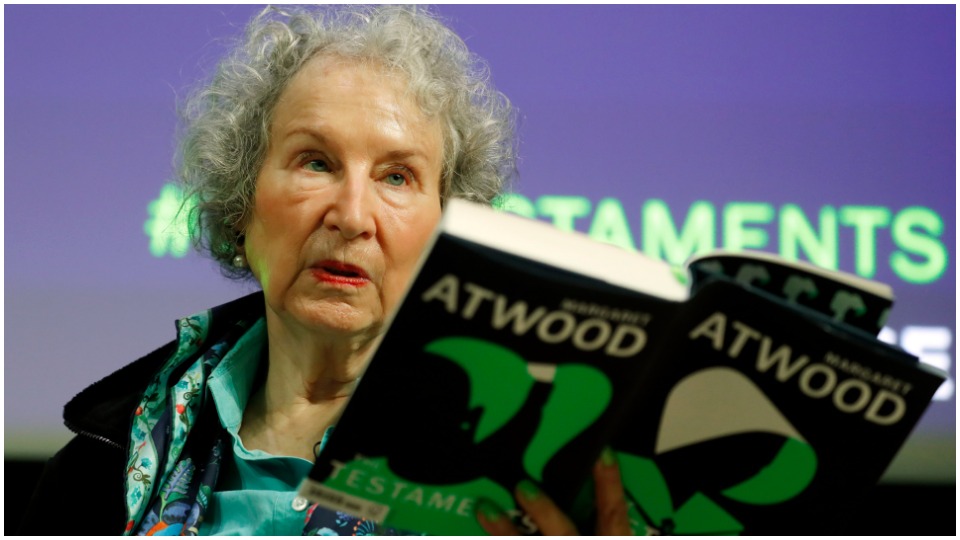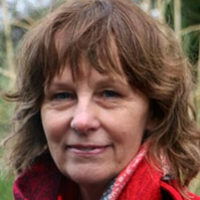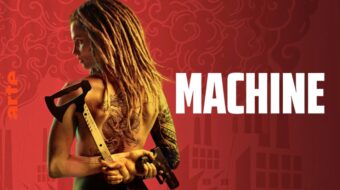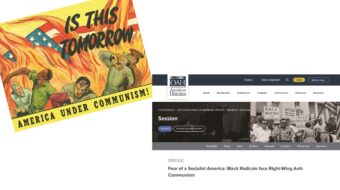
Margaret Atwood, who turns 80 on November 18, 2019, has written several novels that explore dystopian situations or circumstances where people are subjected to control and violence. The most famous of these is The Handmaid’s Tale (1985). However, what distinguishes Atwood’s work is that people resist such coercion, not just in individual acts but most successfully as part of a secret group or illicit organization. This might be considered a leitmotif of her work. We encounter such resistance not only in The Handmaid’s Tale, but also elsewhere, for example, in the deeply disturbing The Heart Goes Last (2015), or in her contemporary take on Shakespeare’s The Tempest, Hag-Seed (2016).
Oscar Wilde, in The Soul of Man Under Socialism, had this to say about hopes for a positive future:
“A map of the world that does not include Utopia is not worth even glancing at, for it leaves out the one country at which Humanity is always landing. And when Humanity lands there, it looks out, and, seeing a better country, sets sail. Progress is the realization of Utopias.”
Utopia, according to Wilde, is the hope of a better possible life, one where humanity will feel at home. Thinking about what will define such an ideal, and that progresses toward it, occupied writers from Thomas More to William Morris. With the Industrial Revolution and the appearance of more hidden forces at work in society at the beginning of the 19th century, the arts increasingly reflected the experience of horror, and of extreme violence over people and nature. The old, visible powers of feudal society (God, king, law) enter into an alliance with the invisible powers of capital power, and everyday life becomes a world in which the ghostly omnipresent terror of an anonymous dominating and oppressive power can break out at any time. Examples of such horror include the work of E.T.A. Hoffmann, Goya’s Caprichos and Desastres de la Guerra, Schubert’s Winterreise. Toward the end of the 19th century, further manifestations are Stoker’s Dracula and Munch’s The Scream.
These visions of horror become the dystopias of the 20th and 21st centuries, many leaving little hope for liberation. Continuing wars, with their displacement of people, the ever increasing anonymity of domination and accompanying loss of control, as well as environmental disaster are all valid factors feeding into this pessimism.
The Maddaddam trilogy
Margaret Atwood’s Maddaddam trilogy imagines an all but post-human world. She explores a world where the free market has led to global anarchy. A technocracy of enormous corporations has destroyed national governments, communities, the ecosystem and, finally almost extinguished life on the planet. Apart from some very few humans, there are left genetically engineered animals such as pigoons, wolvogs and rakunks, and artificially created creatures called Crakers, produced by Crake in his top-secret Paradice project.
Oryx and Crake is the first of the trilogy; Year of the Flood the second, and Maddaddam concludes it. Oryx and Crake sets the scene. The time is in the future, however, the elements making up this future have their recognizable roots in our present. The world is divided into the haves and have-nots. The haves are the corporations; their employees live in corporation compounds. They are given better lifestyles than the working-class pleebland inhabitants. The raison d’être of the companies is to produce, in competition with others, products promising eternal youth, vitality, sexual prowess, and the promise of resulting happiness: AnooYoo, HelthWyzer, OrganInc and RejoovenEsense. OrganInc created pigoons to grow organs for transplant. AnooYou is designed to prey “on the phobias and void the bank accounts of the anxious and the gullible.” HelthWyzer manufactures pills for profit, not for health, indeed, health is one of their last considerations. In the race for profits, they introduce viruses into their “health” products, to which they can then develop and sell antidotes. Wars over markets are commonplace.
The compounds are policed by private Corporation Security, CorpSeCorps, who control their populations’ movements, by violence and murder, if they deem it necessary. Opposition is not tolerated.
A hierarchy exists among the corporations, some being rather less successful and thereby poorer than others. The wealthiest ones still provide real food to their workers; the less successful ones seem to be sliding into the artificial food and other conditions imposed on the outside world. This setting is the profit-making class with its more or less bribed employees.
The outside world is called Pleebland (plebeian land, desolate neighborhoods, where the poor live). The pleeblands still contain cities like “New New York” and San Francisco and hold some attraction for the corporation employees as, while dangerous and diseased, places of entertainment and “time out.” Permission and passes are required to go there. This is where the poor live, those at whom the sale of products is aimed.
The story is told from the point of view of Snowman from the novel’s current time, with flashbacks to his past when he was still Jimmy. His best friend at the time, Glenn, is referred to as Crake, a name he picked as a character in an online game the two played, Extinctathon, controlled by the enigmatic Maddaddam.
Both characters have parents who have disappeared. Crake’s father died in a car accident when Crake was very young. Crake believes his father was eliminated for objecting to the practice of introducing disease into the population in order to profit from then selling the remedy. Jimmy’s mother, whom the reader gets to know better, runs away from the compound and protests against their practices. Such defection is dangerous, and she knows she needs to disappear without a trace. The corporation tries to locate her, follow her surreptitious messages to Jimmy, and interrogate him occasionally regarding her whereabouts. It is likely, although not certain, that Jimmy and Crake witness her execution online.
These two people are not the only examples of resistance to corporate rule. During the coffee war, there is mention that “Union dockworkers in Australia, where they still had unions, refused to unload Happicuppa cargoes.” While Crake’s father’s protest is an individual one, these dockworkers act in unison, and they are supported: “in the United States, A Boston Coffee Party sprang up.” Jimmy’s mother, too, has clearly joined opposition groups. When Jimmy hears from her or sees her online, she is always part of broader movements.
Crake’s highly valued academic science and maths skills ensure his speedy progression in corporation hierarchy. Jimmy’s verbal skills land him in advertising. Eventually, Crake brings him to the most powerful RejoovenEsense corporation, in which he is a high senior operator. Jimmy’s job here is to run the ad campaign for BlyssPluss, a product to increase sexual performance, protect against STDs, extend youth, and function as male and female birth control to reduce global population. Secretly, Crake works on the creation of humanoids, the Children of Crake. These are “grown” in an artificial dome.
Jimmy and Crake both love Oryx, whom they first see in a child pornography film. She is Asian by birth and was sold, as was common practice in her village, to a white man. Her odyssey brings her to North America and Crake later hires her to be a teacher for his Crakers: to explain simple concepts and communicate with them. She also markets BlyssPluss around the world.
When the catastrophe strikes, both Crake and Oryx die violently, and Jimmy takes the Children of Crake to a safe place by the sea. Just how safe this place is, is debatable, as the environment is badly damaged and they need to seek food and other essentials for survival. The children of Crake have been programmed to live on plants only.
This first volume of the trilogy ends as first the Children of Crake, later Snowman, encounter other human survivors. Perhaps playing on a set of fossilized early human footprints discovered on the shore of Langebaan Lagood, South Africa, in 1995, here too, Snowman traces the whereabouts of the humans by following their imprints on the beach. He finds “Two men, one brown, one white, a tea-colored woman.” He is uncertain as to what to expect, knowing his own species, and considers different scenarios of how to relate to them. In the end, he leaves them without making himself known and returns to the Children of Crake, who he knows are naïve, friendly, peaceful, and care for him.
Toward a new humanity
While Oryx and Crake (2003) is set in the Compounds, the second volume in the trilogy, The Year of the Flood (2009), is set contemporaneously in the violent and disease-ridden pleeblands. This is where the novel’s central female characters, Toby and Ren, live, relating the stories of their lives and individual survival of Crake’s pandemic. The narrative shift from compound to pleebland is echoed in the transition from individual narrator to two narrators, from male to female, from isolation to group.
The two women had been members of a religious sect (albeit themselves not terribly religious), the pacifist and ecological God’s Gardeners, who had predicted the apocalyptic Waterless Flood brought about by environmental destruction. As they see it, Crake’s pandemic is this flood. God’s Gardeners is a dropout group, which is not idealized by Atwood, but shown with its own weaknesses.
A disagreement over tactics causes Zeb to leave the pacifist Gardeners and engage in active bioterrorist opposition to the Corporations’ security police. As the narrative draws toward the present, surviving Gardeners are forced into hiding and are hounded by dehumanized criminals (“painballers”), who murder and kidnap. Echoing the ending of Oryx and Crake, The Year of the Flood concludes as the main characters find other survivors, including Jimmy, and the two painballers, along with their kidnap victim. They do not kill their criminal captives, but tie them up and feed them. The closing paragraph announces the arrival of Crake’s Children approaching them, “many people singing. Now we can see the flickering of their torches, winding towards us through the darkness of the trees.”
The final book in the trilogy, Maddaddam (2013), is written from the perspective of Zeb and Toby, who were both introduced in The Year of the Flood. Their stories are told in the wake of the same biological disaster. They eventually meet up with Jimmy (from Oryx and Crake) and other survivors. Together with the Crakers, they start remaking civilization, but are still troubled by criminals. Some humans mate with the Crakers, but eventually die out. The end part of the story is told by the human-like new race. They are peace-loving and environmentally aware.
Atwood’s outlook is cautiously, if thinly, optimistic for the survival of life on the planet. Despite an impending profit-driven environmental catastrophe, wars, and cynical disregard for human beings, it is the ordinary human beings who have the greatest potential for survival. Very few do survive, but they realize that continued existence can only be achieved in solidarity with one another, not in competition, rivalry, exclusion, or individualism. While the danger is by no means banished, a return to the awareness our tribal ancestors had of community is essential. And perhaps humankind will only live on in a new version of itself.

MOST POPULAR TODAY

‘Warning! This product supports genocide’: Michigan group aims to educate consumers

Ohio: Franklin County treasurer attends Netanyahu meeting, steps up Israel Bond purchases

“Trail of Tears Walk” commemorates Native Americans’ forced removal

After months of denial, U.S. admits to running Ukraine biolabs

Hold the communism, please: SFMOMA’s Diego Rivera exhibit downplays artist’s radical politics






Comments